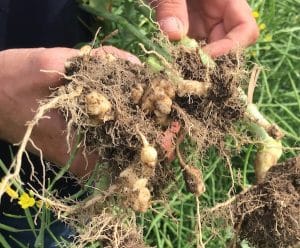Seeing galls again? Or seeing galls for the first time? Here are four quick questions to guide your pre-harvest clubroot assessment for 2021.

Pre-harvest is a good time to scout canola for yield-limiting levels of disease. This is when disease symptoms tend to be most obvious, which makes it easy to assess the degree of damage. Please read Disease ID tips for pre-harvest scouting.